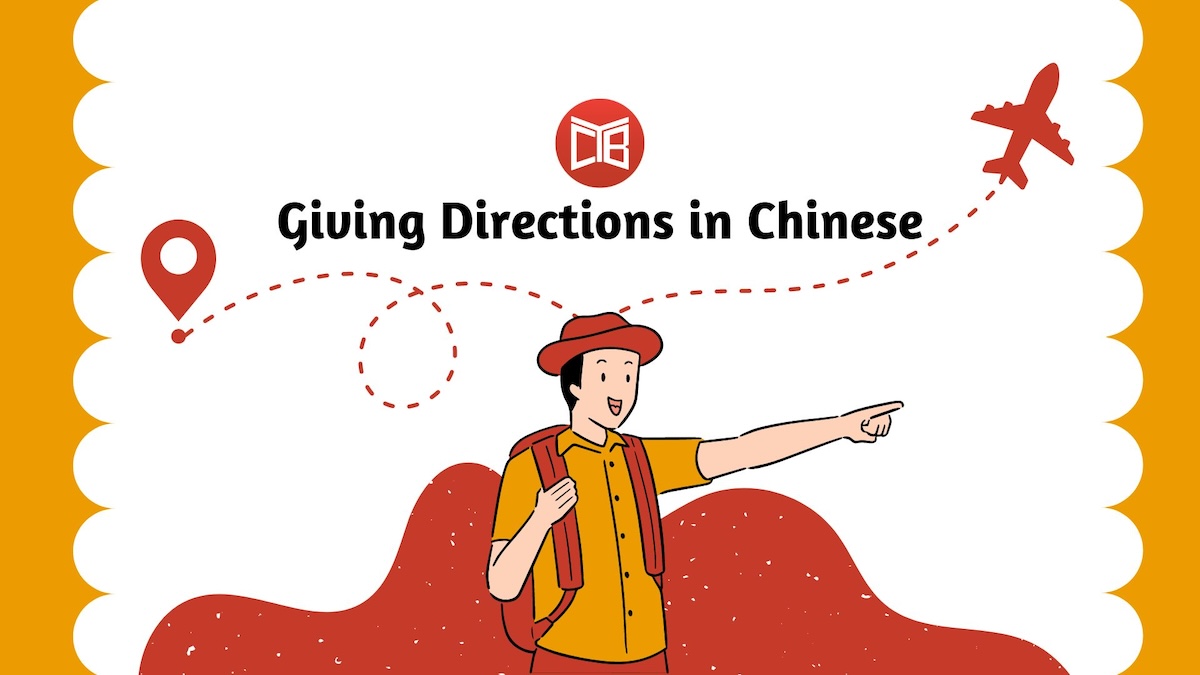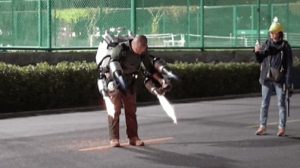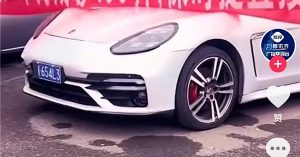
We’ve all been there. You are in a country where you think you know the language and you have to catch a train. You ask someone on the street how to get to the train station but the person speaks so fast you have no clue about the vocabulary. Sounds familiar? If this happens to you in a country with a population of 1,425 million people with less than 1% of them speaking English, this article may bring light into your day! In this article, I will give you the basics to give or understand someone who gives you directions in Chinese. I will limit this article to “street directions”, how to get from one place to another by foot. With this, you should be able to get around in any city in China. And don’t forget: 条条大路通罗马 tiáo tiáo dà lù tōng Luómǎ!
Polite Words to Ask for Directions in Chinese
First thing’s first; in China, politeness comes first when interacting with people. Only a few key words will lead you to a smooth exchange when stopping someone on the street for directions. Here are two basic words you can use to start your sentence when asking for directions:
1) 请问 qǐngwèn “May I please ask…”
请问 is used at the beginning of a question and it is a short and polite way to announce that you will ask something.
Ex: 请问,图书馆在哪儿?Qǐngwèn, tǔshūguǎn zài nǎr?
May I ask, where is the library?
2) 不好意思 bù hǎo yìsi “excuse me…”
不好意思 also goes before your question as you first apologize for asking a question (similar to “excuse me” in English).
Ex: 不好意思,火车站怎么走? bù hǎo yìsi, huǒchēzhàn zěnme zǒu?
Excuse me, how do I get to the train station?
Now, let’s see which vocabulary you will need to give directions.
Cardinal Points for Directions in Chinese
Before we can get more into the grammar details of how to give directions, let’s make sure that we have all the necessary vocabulary to do so.
The Cardinal Points: 东 西 南 北
In Chinese, there is a particular order to enumerate the cardinal points. We first start with 东 (Dōng – East), 西 ( Xī – West) , 南 (Nán – South) and 北 (Běi – North). Even if these direction words will normally not be used when giving directions for a walking distance, it is inevitable when giving directions for a longer distance (car trip, train etc.).
Here’s a question: what is the relation between the cardinal points and a common Chinese words used in daily conversation? Did you already guess which word I am talking about? East and West…东…西…东西!Have you ever wondered why we use 东西 dōngxi (East, West) to form the word things in Chinese?
This word has a story that comes from ancient times. According to Chinese cosmology, everything in the world can be broken down into five basic elements: Wood, Fire, Earth, Metal and Water. In addition, these five elements are associated to each of the cardinal points:
东: Dōng: wood
西: Xī: metal
南: Nán: fire
北: Běi: water
One version for the 东西 word creation comes from the Song Dynasty (960 – 1279 CE). One day, a philosopher named 朱熹 (Zhū Xī) came across his good friend 盛温和 (Shèng Wēn Hé), a master of the Five Elements (五行). Zhū Xī asked his friend where he was going. 盛温和 answered “I am going to 买东西 mǎi dōngxī” (“buy East and West”). His friend looked at him with no clue about what he was going to buy. 朱熹 then asked “why are you going to 买东西 (buy East and West) and not 买南北 (buy South and North)? 盛温和 started laughing at his friend for not understanding such an evident equation. He then explained that by putting the five elements and the cardinal points together, his friend would understand what he was going to buy. Instantly, 朱熹 had an illumination: His friend was going to buy wood and metal, what else could he put in his bamboo basket? Fire would burn it and water would come out. The only things he can buy and put in his basket are wood and metal!
This is how the word 东西 dōngxi “things” (with no tone on xi!) started to be used.
A second version about the origin of the word 东西 dōngxi exists and it comes from the Eastern Han dynasty (25 – 220 A.D.) This second version shows that the word 东西 would have been used way before the story of Zhū Xī and Shèng WēnHé. Here is the story:
During the Eastern Han dynasty, two major merchant cities were in opposite directions: 长安 Cháng’ān in the west and 洛阳 Luòyáng in the east side of the country. 长安 Cháng’ān was called the capital of the west 西京 (xījīng) and 洛阳 Luòyáng the capital of the east 东京 (dōngjīng)。Therefore, people were mainly went to these two cities to buy what they needed for their daily life: 买东 mǎi dōng (meaning buying East) and 买西 mǎi xī (buying West). These expresssions rapidly combined to express going to buy thing 买东西!
Whatever story you prefer, this is a great way to create mnemonics to build up your vocabulary and get ready to use the sentence patterns explained below.
Position and Location Words to Give Directions in Chinese
No matter your level of Chinese, a minimum of specific vocabulary is needed in order to give or understand directions in Chinese. Let’s start with essentials position words:
| 左边 | zuǒbian | left side |
| 右边 | yòubian | right side |
| 前面 | qiánmiàn | front side (in front) |
| 后面 | hòumiàn | back side (behind) |
| 中间 | zhōngjiān | in the middle (between) |
| 对面 | duìmiàn | opposite side |
| 旁边 | pángbiān | next to |
Location Words
| 火车站 | huǒchēzhàn | train station |
| 购物中心 | gòuwùzhōngxīn | shopping center |
| 机场 | jīchǎng | airport |
| 超市 | chāoshì | supermarket |
| 地铁站 | dìtiězhàn | metro station |
| 银行 | yínháng | bank |
Now let’s move on with basic structures.
Basic Structure using zài 在 (to be in, on, at a place) to Give Directions in Chinese
Let’s say someone ask you the following question:
请问,火车站在哪儿?Qíngwèn, huǒchēzhàn zài nǎr?
May I ask, where is the train station?
To answer to this question in the easiest way, we would use this first sentence structure:
1- Subject (location) + ( verb在) + position
| Subject (Location) | Verb 在 | Position |
| 火车站 | 在 | 前面 |
| huǒchēzhàn | zài | qiánmiàn |
| train station | to be (at, on or in) | in front |
| The train station is in front. | ||
Here is another example using the same structure:
请问,超市在哪儿? Qǐngwèn, chāoshì zài nǎr?
Sorry, where is the supermarket?
| Subject (Location) | Verb在 | Position |
| 超市 | 在 | 左边 |
| chāoshì | zài | zuǒbian |
| supermarket | to be (at, on or in) | on the left (side) |
| The supermarket is on the left. | ||
As you can see, the sentence structure revolves around the verb 在 , the location 超市 and the position word 左边. Now let’s say you want to answer more in detail, using two locations; the metro station 地铁站 and the shopping mall 购物中心. In this situation, we would use the following structure:
2- Location 1 + (verb 在: to be located) + Location 2 + (的de) position
| Subject (Location 1) | Verb 在 | Location 2 | (的de) +Position |
| 地铁站 | 在 | 购物中心 | 对面 |
| dìtiězhàn | zài | gòuwùzhōngxīn | duìmiàn |
| metro station | to be (at, on or in) | shopping mall | in front (opposite side) |
| The metro station is in front of the shopping mall. | |||
As you can see, the auxiliary word 的 de can be omitted after location 2.
Now, imagine you want to know on which street is the bank 银行 using the following structure:
3- Location + (verb 在) + street name + position: on (上shang)
| Location | Verb 在 | Street name | On (shang) |
| 银行 | 在 | 王府井大街 | 上 |
| yínháng | zài | Wángfǔjǐngdàjiē | shang |
| bank | To be (at, on or in) | Wangfujing Avenue | on |
| The bank is on Wangfujing Avenue. | |||
In all three patterns, the structure revolves around the verb 在. This verb plays a major role when giving directions. It is a pillar in your sentence. Once you put your subject (here location) followed by the verb 在, the rest of your sentence will get into place like a puzzle. Depending on how elaborate you want to be, you just have to follow the sentences mentioned here.
Before we get to a last and more detailed structure, let’s review some important directions vocabulary.
Major Nouns and Verbs to Give Directions in Chinese
Here are some basic nouns and verbs you have to master in order to give directions.
Major Nouns for Directions
| 路 | lù | road, path |
| 大马路 | dàmǎlù | main street, avenue |
| 街 | jiē | street |
| 路口 | lùkǒu | crossing, intersection |
| 十字路口 | shízì lùkǒu | cross road, intersection |
| 红绿灯 | hónglǜdēng | traffic light |
Verbs Used to Give Directions
| 走 (走路) | zǒu (zǒulù) | to walk |
| 过 | guò | to cross |
| 到 | dào | to arrive |
| 沿着 | yánzhe | to follow |
Other Useful Words for Giving Directions:
| 往 | wǎng | towards |
| 一直 (走) | yīzhí (zǒu) | straight, continuously (walking) |
| 到 (走到) | dào (zǒudào) | until (walk until) |
In the next paragraph, we will see how to make a complete answer for giving directions.
More Complex Structure to Give Directions in Chinese
Imagine you want to get to your hotel from the train station. You ask your way on the street “请问,北京中国大饭店怎么走”? “Qǐngwèn, Běijīng Zhōngguó dàfàndiàn zěnme zǒu? Excuse me, can I ask how to get to the hotel? The following could be the answer:
“往前面一直走,到第一个红绿灯左拐, 然后走到第二个十字路口右拐。北京中国大饭店在中国北京建国门外大街上。走路二十分钟就到了”。
Ok. If you got it, you are already to the next level! However, just in case, here is the pinyin before we review this answer in details:
“Wǎng qiánmiàn yīzhí zǒu, dào dì yí ge hónglǜdēng zuǒguǎi,ránhòu zǒu dào dì èr ge shízì
Lùkǒu yòuguǎi. Běijīng Zhōngguó dà fàndiàn zài zhōngguó Běijīng jiànguó ménwài dàjiēshàng.
zǒulù èrshí fēnzhōng jiù dào le.”
Let’s see the reply in details.
Using 往 wáng “toward” when giving directions
4- a) 往前面一直走
In this first part of how to get to the hotel, the subject 你 is normally omitted. This structure indicates first the direction you have to take and then the action:
往前面 一直走 : Walk straight in front of you
Wǎng qiánmiàn yīzhí zǒu
Toward in front Straight walking
Using 到 dào “until” when giving directions
4- b) 到第一个红绿灯左拐
Here, we also omit the subject 你 and go directly with 到 (complement of 走 from the first part of the sentence in 4-a) + the action at the end
In details: : At the first traffic light turn left
到: Until (dào )
第一个: The first (dì yí ge)
红绿灯: traffic light (hónglǜdēng)
左拐: zuǒguǎi: left turn (turn left)
Using 然后 ránhòu “then” and 走到 zǒudào “walk to” when giving directions
4- c) 然后走到第二个十字路口右拐
This part of the sentence starts with the conjunction 然后 ránhòu ( then).
A word about 然后 ránhòu. This conjunction is an important key word in general in spoken Chinese. It is one of the most used conjunctions in oral Chinese to link sentences when you enumerate a succession of actions.
After 然后,we continue with the next action: 走到 walk until (once again, we have the verb complement 到,walk until a specific place). 走到第二个十字路口 zǒudào dì èr ge shízì lùkǒu. Walk until the second (dì èr ge) shízì lùkǒu (intersection).
The word intersection is quite interesting with its four characters meaning “the cross road” in the shape of number ten 十 in Chinese:
The sentence ends with your last action, 右拐 yòuguǎi, right turn (turn right).
Using 在 zài + Location + 上shàng (on) when giving directions
4- d) 北京中国大饭店在中国北京建国门外大街上
For this part of the given directions, you have to refer to the third sentence pattern explained at the beginning of the article. As a reminder, to give a location on a specific street, the pattern is as follow:
Place + (verb 在) + street name + position: on (上: shang)
Place: 北京中国大饭店
Verb: 在
Street name (location): 中国北京建国门外大街
Position (on): 上
Using 就到了 jiù dào le “and you arrive there” when giving directions
4- e) 走路二十分钟就到了
When giving directions, we often conclude with the time it will take you to get to your destination. Here, the structure is as follow:
Verb (again no subject 你): 走路 walk
Duration: 二十分钟 20 minutes
Adverb: 就 then
Verb: 到 arrive
Final particle: 了 (structure: 就…了)
These are not exhaustive examples and many other ways of giving directions can be put together. However, with the above, you should be able to get around pretty well on your own.
Key Takeaways for Giving Directions in Mandarin
Finally, I would like to mention that giving or listening to directions in Chinese can be very intimidating at the beginning. First, you control your own vocabulary but you cannot control the vocabulary used by the person giving you directions! China is big and a tremendous amount of different accents can be heard everywhere. It can be challenging for anyone at any level. Just remember: Stay calm and ask the person to repeat 请问,你可以再说一遍吗?Qǐngwèn, nǐ kěyǐ zài shuō yībiàn ma? This should make it. Chinese people really appreciate when foreigners use their language. They normally go into compliments that can actually exceed your actual level! But hey, this is their way of encouraging you in your learning journey and who doesn’t need every bit of it, really!
Author
Manon Garceau
Manon is a long time passionate about Chinese language and culture. She majored at the University of Montreal in East Asian Studies and then spent 15 years in Taiwan and a few months in Tianjin working as an interpreter and translator. After completing a Master for Teaching Chinese as a Second Language at Taiwan Normal University, she moved to Barcelona where she worked at The Confucius Institute as a Chinese teacher. Her experience as a Chinese interpreter for Cirque du Soleil is the highlight of her career until now.

























